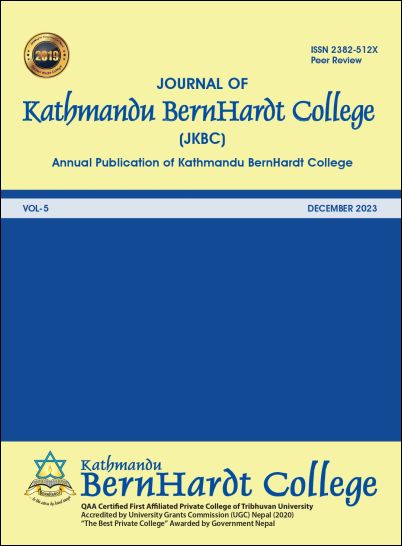Analyzing the Relationship Between Public Debt and Economic Growth in Nepal: An ECM Approach
DOI:
https://doi.org/10.3126/jkbc.v5i1.66750Keywords:
Internal debt, External debt, Total debt, Economic growthAbstract
The complex relationship between public debt and economic growth hinges on factors like debt sustainability, investment efficiency, and fiscal policy effectiveness, where excessive debt may stifle growth, while prudent management can bolster development initiatives. This paper delves into the analysis of the connection between public debt and economic growth in Nepal, spanning from fiscal year 1990/1991 to 2021/2022. The study employs conventional Error Correction Model (ECM) techniques, utilizing both descriptive and analytical research approaches with secondary data. Over the observed period, Nepal’s GDP exhibited substantial growth, coinciding with an upsurge in total debt, hinting at a complex but generally positive connection. The regression analysis echoes this notion, emphasizing that internal and external debt can have a favorable impact on short-term GDP, but vigilance in managing high total debt levels is crucial. Nevertheless, the presence of potential autocorrelation in residuals necessitates further investigation for model refinement and policy implications. Prudent debt management in Nepal is crucial for fostering economic growth, necessitating prioritization of productive investments, fiscal discipline, and sustainable borrowing practices.




